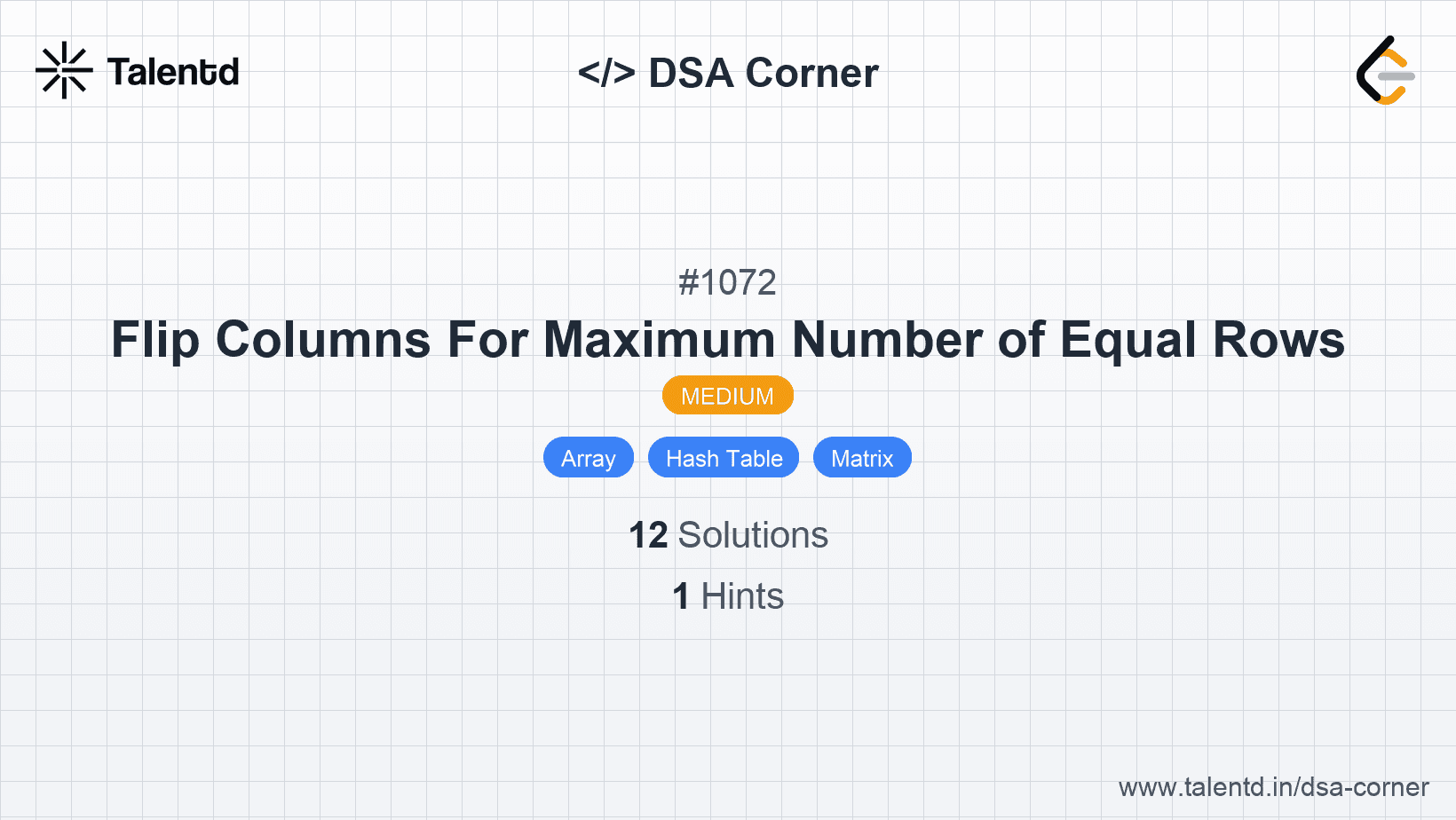
Sponsored
Sponsored
By considering identical or opposite binary patterns within rows, the task reduces to finding the maximum similar pattern. If row 'A' can be made equal to row 'B', they must have the same or opposite pattern for all columns.
Time Complexity: O(m * m * n) where m is the number of rows and n is the number of columns. Space Complexity: O(n) for the transformation key.
1from collections import defaultdict
2
3def maxEqualRowsAfterFlips(matrix):
4 pattern_count = defaultdict(int)
5 for row in matrix:
6 pattern = tuple(val == row[0] for val in row)
7 pattern_count[pattern] += 1
8 return max(pattern_count.values())The rows are transformed into boolean patterns and stored in a dictionary to track frequency. We return the maximum frequency pattern.
This alternative method evaluates each row by considering both its native and entirely flipped transformations, tallying frequency counts using these dual patterns in order to discover the maximal frequency count of equivalent rows.
Time Complexity: O(m * n), Space Complexity: Usage is reduced because of the hash bucket with a distant hash-field.
Both the natural and counter-state alterations of each row are represented concurrently within a hashmap. Applying HashMap suits the multi-choice patternwise computation requirements for functionally dual pattern structures.